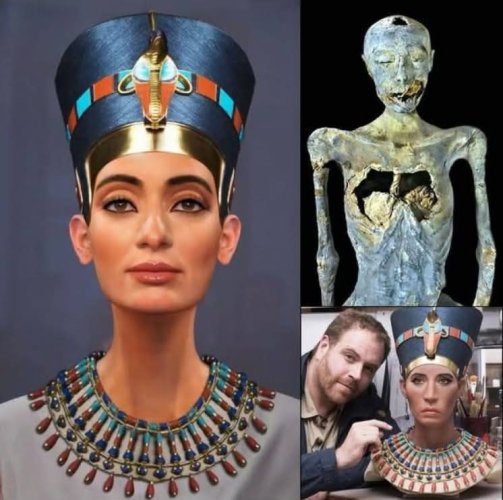
It was believed Nefertiti vanished from historical records around the 12th year of her husband's 17-year reign, which corresponds to approximately 1338 B.C.
After this point, there is no further mention of her in contemporary records. As for her death, the exact date is not definitively known. However, many historians infer that she might have died around this time due to her sudden disappearance, although there's no direct evidence confirming her death or burial. Some theories suggest she might have ruled as Pharaoh under the name Neferneferuaten, although some propose Neferneferuaten was in fact a daughter of Nefertiti and Akhenaten.
In 2012, archaeologists uncovered a graffito at Deir el Bersha, Egypt, which identified Nefertiti as Akhenaten's primary queen, titled "Great Royal Wife, His Beloved, Lady of the Two Lands, Neferneferuaten Nefertiti". This message, inscribed in red ochre on a limestone quarry wall, dates back to the 16th and final year of Akhenaten's reign as pharaoh.
This discovery is significant because it confirms that Nefertiti remained alive and retained her royal status near the end of Akhenaten's rule. This finding opens up the possibility that the subsequent female pharaoh, Neferneferuaten, might have been either Nefertiti herself or her daughter, Meritaten.
Royal Tomb (Amarna 26) was intended for Akhenaten and his family. It includes an unfinished suite that some scholars, like Egyptologist Marc Gabolde, believe might have been intended for Nefertiti. However, no definitive evidence proves she was buried there.
Read more: https://egypt-museum.com/nefertiti-queen-and-pharaoh-of-egypt-her-life-and-afterlife/

